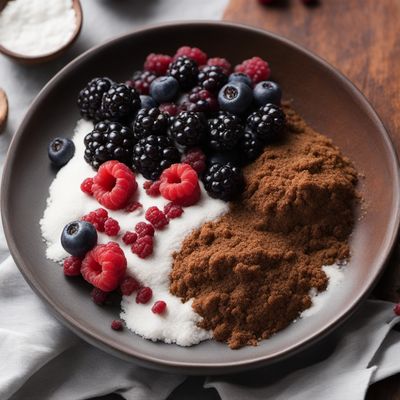
Ingredient
Other edible snails not belonging to the genus Helix
Exploring the World of Edible Snails: Beyond Helix
Other edible snails not belonging to the genus Helix encompass a wide range of snail species that are consumed as food in different parts of the world. These snails are known for their distinct flavors and textures, which can vary depending on the species and their natural habitat. They are often larger in size compared to Helix snails and may have a more pronounced earthy or gamey taste. The texture of these snails can range from tender and succulent to slightly chewy or firm. Their appearance can vary greatly, with shells that may be smooth, ribbed, or spiky, and colors that can range from light to dark. When cooked, the flesh of these snails can take on different hues, from white to beige or even pink.
Origins and history
The consumption of snails as a food source dates back thousands of years, with evidence of their consumption found in archaeological sites around the world. Different cultures have embraced the culinary use of snails, incorporating them into traditional dishes and delicacies. In some regions, snails are considered a delicacy and are associated with special occasions or festive celebrations. Today, these snails continue to be enjoyed in various cuisines, offering a unique and adventurous dining experience for those willing to explore their flavors.
Nutritional information
Other edible snails not belonging to the genus Helix are a good source of protein, vitamins, and minerals. They are low in fat and carbohydrates, making them a nutritious addition to a balanced diet. However, the nutritional composition can vary depending on the species and the specific habitat in which they are found.
Allergens
Some individuals may have allergies or sensitivities to snails in general. It is important to exercise caution and consult with a healthcare professional if you have any concerns or known allergies.
How to select
When selecting other edible snails not belonging to the genus Helix, it is recommended to purchase them from reputable sources that specialize in supplying edible snails. Look for snails that are fresh, alive, and free from any signs of damage or contamination. If purchasing pre-cooked or canned snails, check the expiration date and ensure that the packaging is intact.
Storage recommendations
To maintain the freshness and quality of other edible snails not belonging to the genus Helix, it is best to keep them alive until ready to use. Store them in a cool, dark place with proper ventilation, such as a refrigerator or a cool cellar. If the snails are pre-cooked or canned, follow the storage instructions provided on the packaging.
How to produce
The production of other edible snails not belonging to the genus Helix is typically done on a commercial scale, as it requires specialized facilities and knowledge of snail farming practices. It is not a suitable endeavor for amateur producers.
Preparation tips
Before preparing other edible snails not belonging to the genus Helix, it is important to thoroughly clean and purge them to remove any impurities or grit. This can be done by soaking them in water with salt or vinegar for a period of time, followed by rinsing and scrubbing. Cooking methods for these snails can vary depending on the recipe and personal preference, including boiling, steaming, sautéing, or baking. Experiment with different flavors and seasonings to enhance the natural taste of the snails.
Culinary uses
Other edible snails not belonging to the genus Helix are commonly used in various cuisines around the world. They can be incorporated into dishes such as stews, soups, pastas, and risottos, adding a unique flavor and texture. In some cultures, snails are enjoyed as a standalone dish, often prepared with garlic, butter, herbs, or spices. They can also be used as a topping or filling for pizzas, quiches, or savory pastries.
Availability
Other edible snails not belonging to the genus Helix are commonly available in regions where they are traditionally consumed, such as France, Spain, Italy, Greece, and parts of Asia. They can be found in local markets, specialty food stores, or sourced directly from snail farms.
More ingredients from this category
Recipes using Other edible snails not belonging to the genus Helix » Browse all

Suspiritos with a South Sudanese Twist
Sweet Delights: South Sudanese Suspiritos

Mixed Berry Pudding
Berrylicious Delight: A Twist on Rote Grütze

St. Honoré Cake Recipe
Divine Delights: The Ultimate St. Honoré Cake

English Summer Berry Delight
Luscious Berry Fool: A Taste of English Summers

Haagse Bluf with a Twist
Fluffy Clouds of Delight: A Modern Twist on Haagse Bluf

Epirotic Honey Panna Cotta
Velvety Honey Delight: Epirotic Panna Cotta

Bavarian Cream Delight
Bavarian Dream: A Creamy Delight from the Alps

Spanische Windtorte
Whirlwind Delight: A Heavenly Austrian Meringue Cake

Inuit-style Arctic Salad
Arctic Delight: A Refreshing Inuit Salad

Baked Alaska with a Twist
Flaming Delight: A Modern Twist on Baked Alaska

Russian Honey Berry Pie
Sweet and Tangy Honey Berry Pie with a Russian Twist

Zabaione with a Twist
Velvety Delight: A Modern Twist on Zabaione
